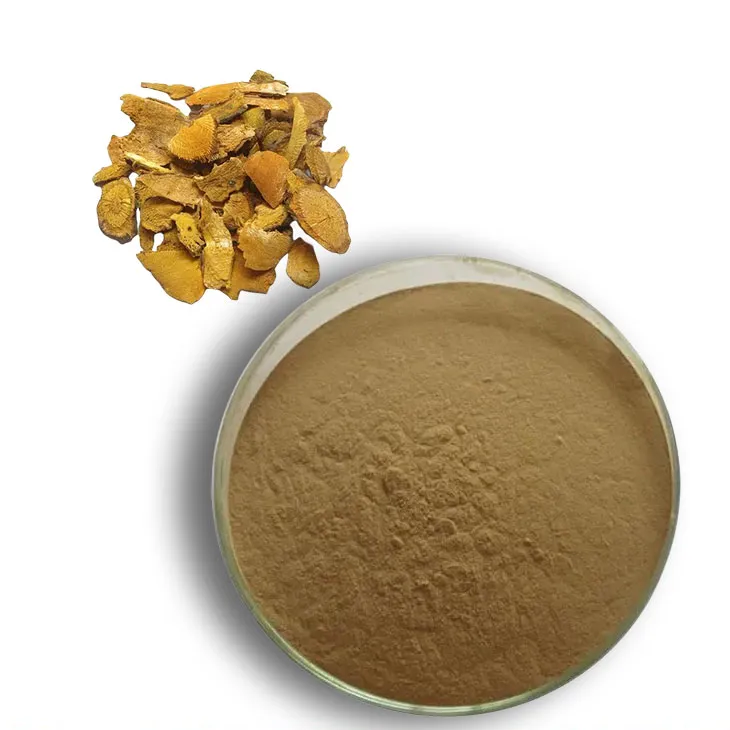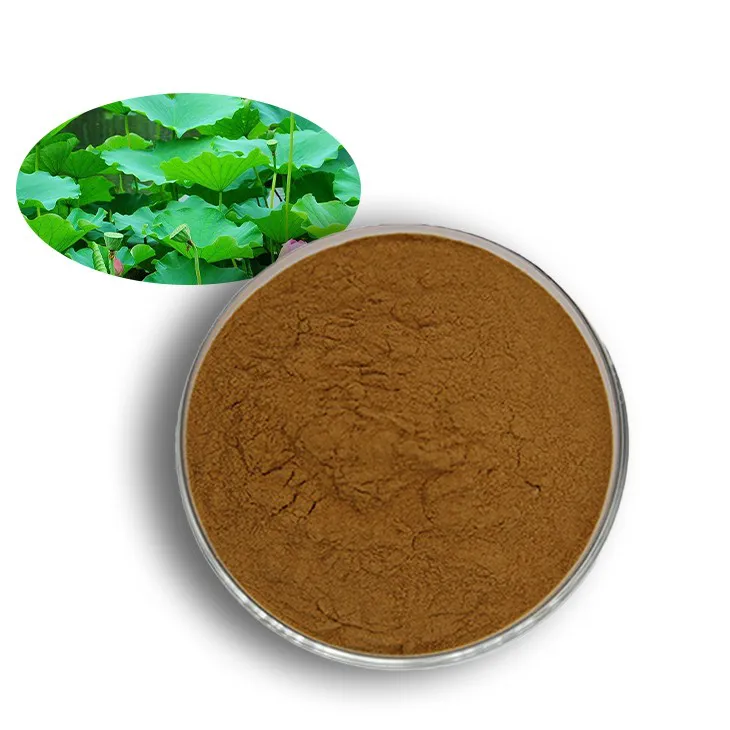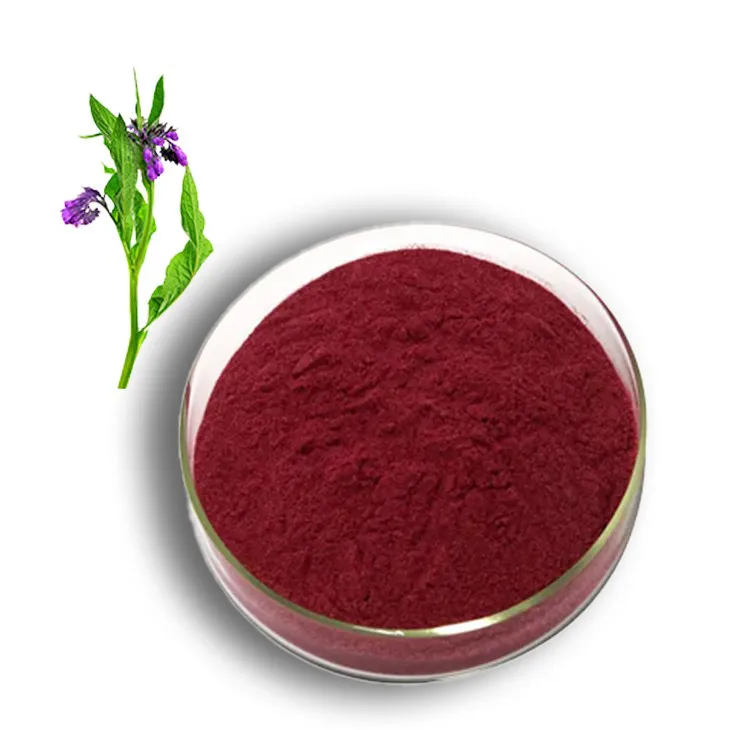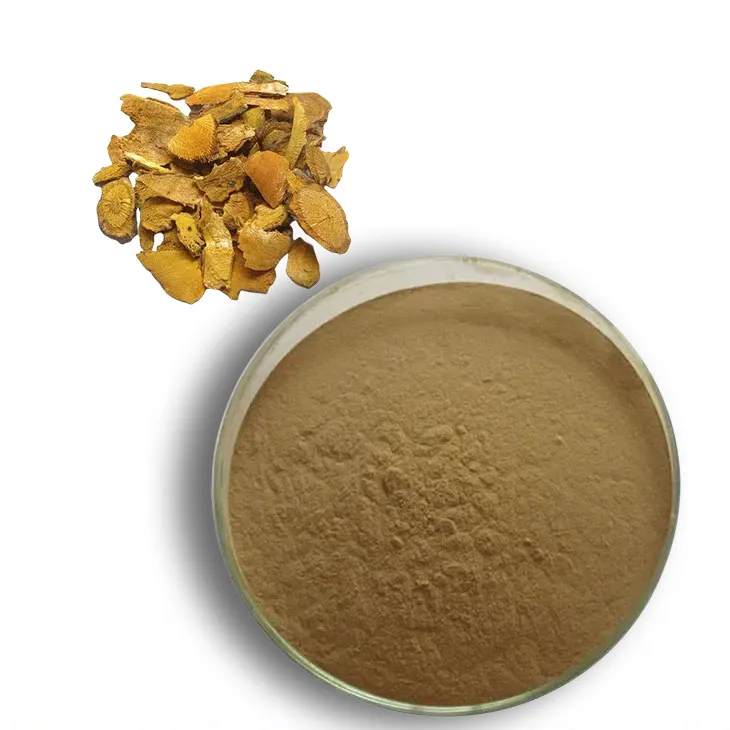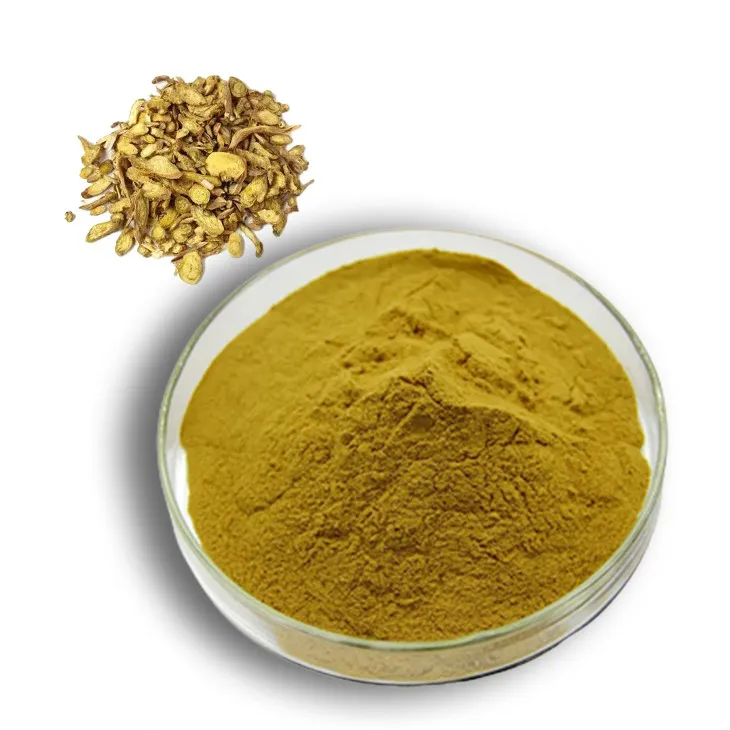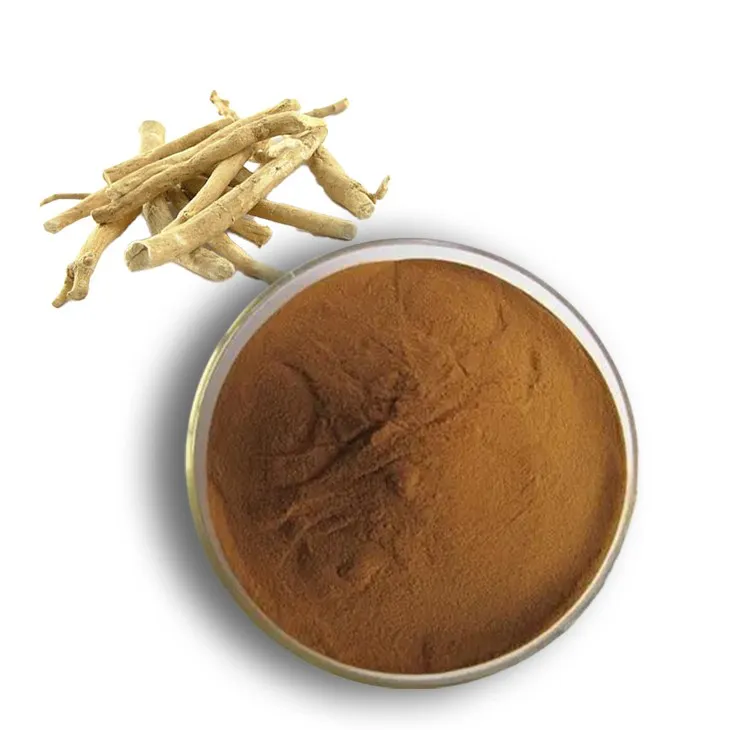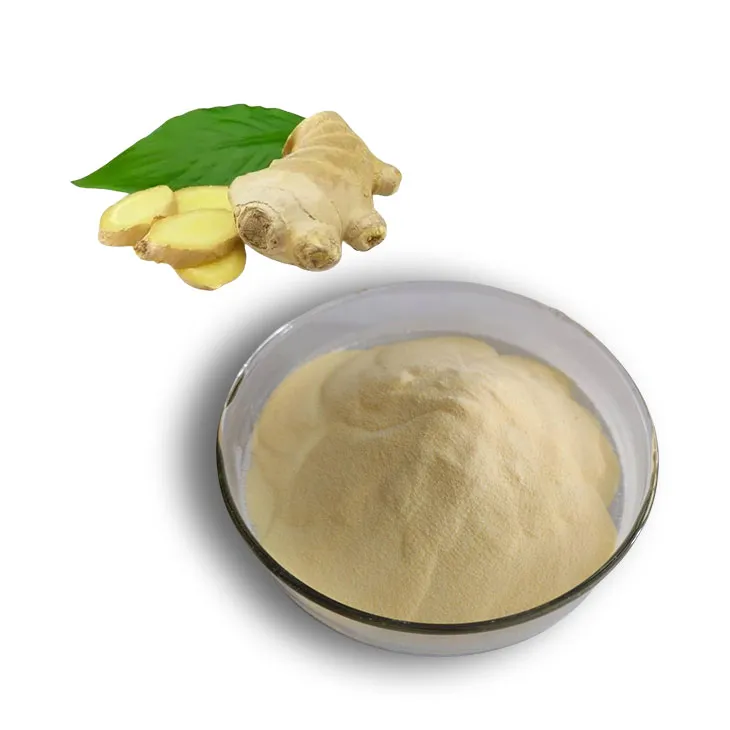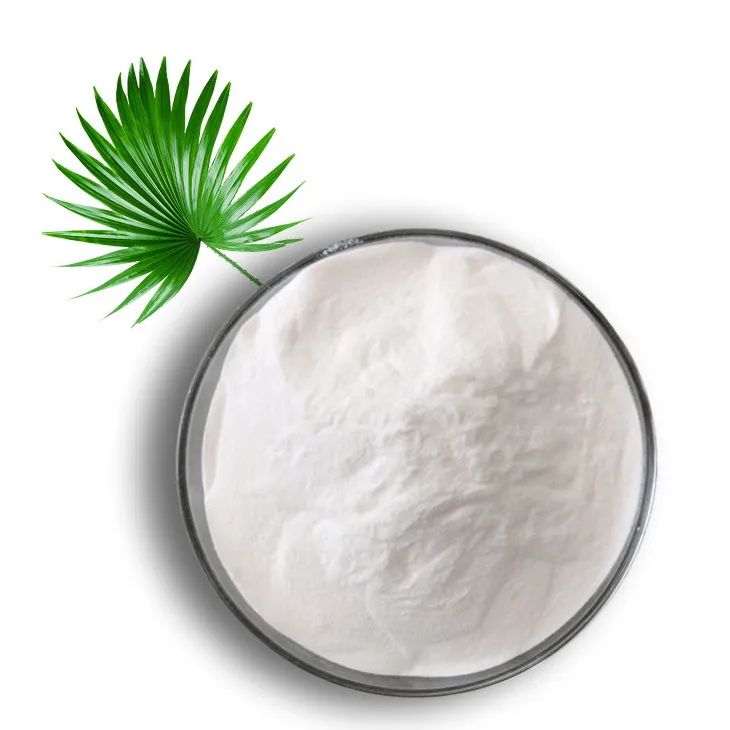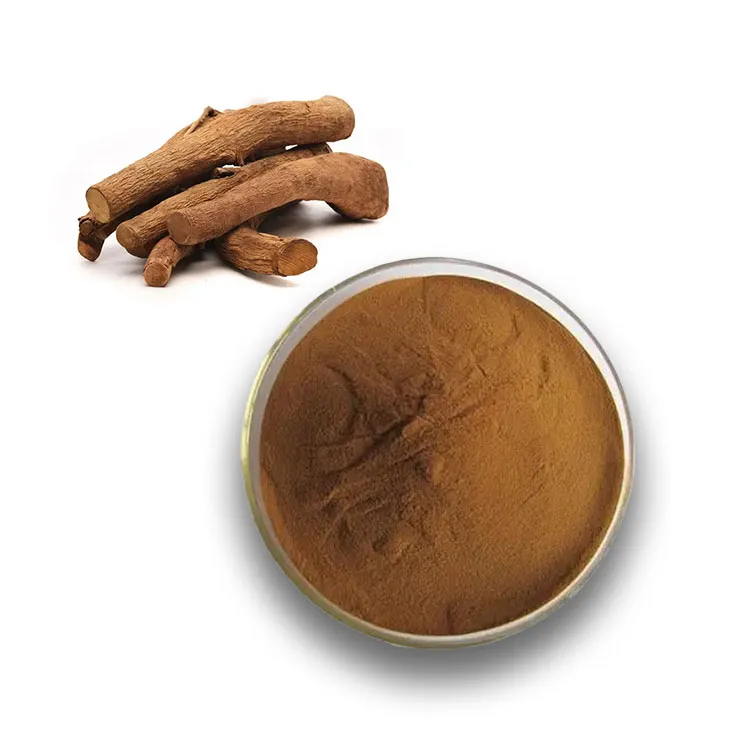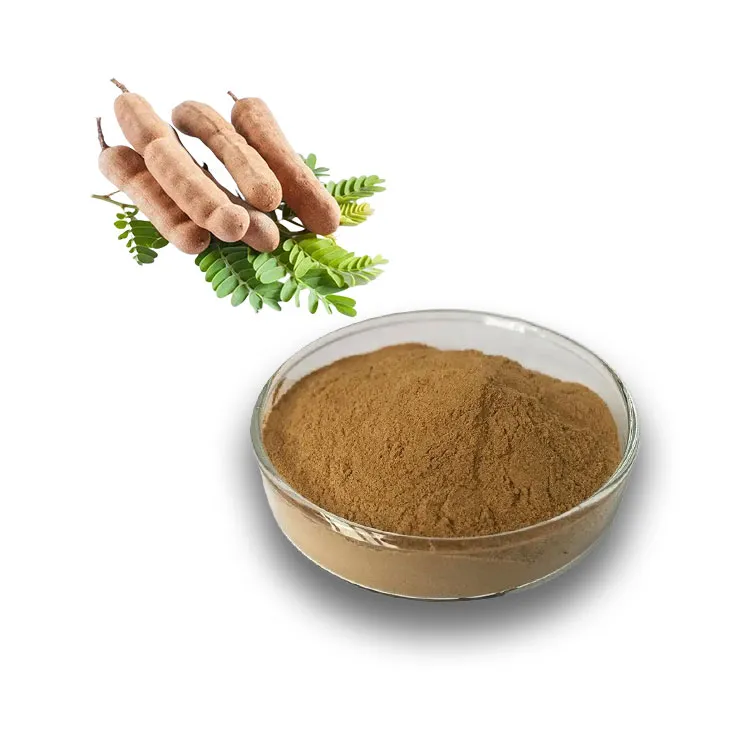- 0086-571-85302990
- sales@greenskybio.com
plant extracts used in cosmetics
2023-09-26
1. Benefits of Plant Extracts for Skin Care
1. Benefits of Plant Extracts for Skin Care
Plant extracts have been utilized in skincare for centuries, offering a myriad of benefits that make them a popular choice in modern cosmetics. Here's why these natural ingredients are so highly valued:
1.1. Rich in Antioxidants: Plant extracts are often packed with antioxidants that help to neutralize free radicals, which can cause oxidative stress and contribute to the aging process. These antioxidants protect the skin from environmental damage and promote a youthful appearance.
1.2. Anti-Inflammatory Properties: Many plant extracts possess anti-inflammatory properties that can soothe irritated skin, reduce redness, and calm inflammation associated with conditions like acne and rosacea.
1.3. Skin-Soothing Qualities: Some plant extracts are known for their calming effects on the skin, making them ideal for sensitive skin types. They can help to reduce irritation and discomfort caused by various skin conditions.
1.4. Hydration and Moisturization: Plant extracts can provide intense hydration to the skin, helping to maintain the skin's moisture barrier and prevent dryness. This is particularly beneficial for those with dry or mature skin.
1.5. Skin Brightening and Even Tone: Certain plant extracts contain compounds that can help to brighten the skin and even out skin tone, reducing the appearance of age spots, dark spots, and hyperpigmentation.
1.6. Anti-Aging Benefits: The combination of antioxidants and other beneficial compounds in plant extracts can help to reduce the visible signs of aging, such as fine lines, wrinkles, and sagging skin.
1.7. Natural Fragrance and Scent: Plant extracts can add a pleasant, natural fragrance to skincare products, which is often preferred by consumers who are looking for products free from synthetic fragrances.
1.8. Gentle and Non-Irritating: For those with sensitive skin or allergies to certain synthetic ingredients, plant extracts can be a gentler alternative that is less likely to cause irritation.
1.9. Supporting Skin Barrier Function: Some plant extracts can help to strengthen the skin's natural barrier function, protecting it from external aggressors and helping to maintain skin health.
1.10. Holistic Approach to Skincare: Using plant extracts in skincare aligns with a holistic approach to beauty, focusing on overall well-being and the interconnection between the skin and the body's internal systems.
Incorporating plant extracts into skincare routines can provide a natural, effective way to address a variety of skin concerns while also promoting a more sustainable and eco-friendly beauty industry.
2. Common Plant Extracts Used in Cosmetics
2. Common Plant Extracts Used in Cosmetics
Plant extracts are widely used in the cosmetic industry for their diverse range of benefits for the skin and hair. These natural ingredients are valued for their ability to nourish, protect, and rejuvenate, offering consumers a more holistic approach to beauty care. Here is a list of some of the most common plant extracts found in cosmetic products:
1. Aloe Vera: Known for its soothing and hydrating properties, aloe vera is a staple in skin care products, especially for those with sensitive or irritated skin.
2. Chamomile: With its calming and anti-inflammatory effects, chamomile is often used in products designed to reduce redness and soothe sensitive skin.
3. Green Tea: Rich in antioxidants, green tea extract is a popular ingredient in anti-aging and skin-protecting formulations.
4. Ginger: Ginger Extract is valued for its anti-inflammatory properties and is often used in products aimed at reducing inflammation and promoting skin health.
5. Rosehip Seed Oil: High in essential fatty acids and vitamins, rosehip seed oil is used for its regenerative and anti-aging properties.
6. Cucumber: Cucumber extract is known for its cooling and hydrating effects, making it ideal for soothing and refreshing the skin.
7. Calendula: This flower extract is used for its healing and anti-inflammatory properties, often found in products for sensitive or damaged skin.
8. Lavender: Lavender Extract is known for its calming and soothing effects, as well as its ability to promote healthy skin.
9. Peppermint: Peppermint extract is used for its refreshing and cooling properties, often included in products to invigorate the skin.
10. Tea Tree: With its antimicrobial properties, tea tree extract is commonly used in products designed to combat acne and blemishes.
11. Witch Hazel: Known for its astringent properties, witch hazel extract is used to tighten and tone the skin.
12. Grape Seed: Grape seed extract is rich in antioxidants and is used for its protective and anti-aging effects.
13. Marigold: Calendula Marigold Extract is valued for its skin-soothing and healing properties.
14. Licorice Root: Licorice root extract is used for its skin-lightening and anti-inflammatory properties.
15. Pomegranate: Pomegranate extract is rich in antioxidants and is used for its anti-aging and skin-nourishing benefits.
16. Sandalwood: Sandalwood extract is known for its moisturizing and soothing properties, often used in products for dry or sensitive skin.
17. Ylang-Ylang: Extracted from the flowers of the Cananga odorata tree, ylang-ylang is used for its calming and hydrating effects on the skin.
18. Jojoba: Jojoba oil is actually a liquid wax that closely resembles the skin's natural sebum, making it an excellent moisturizer.
19. Eucalyptus: Eucalyptus extract is used for its refreshing and deodorizing properties, often included in products for oily skin.
20. Lemon: Lemon Extract is used for its brightening and exfoliating properties, but it must be used carefully due to its potential to cause photosensitivity.
These plant extracts are just a few examples of the many natural ingredients that can be found in cosmetic products. They are chosen for their specific properties that can address various skin concerns and enhance the overall health and appearance of the skin.
3. How Plant Extracts are Sourced and Processed
3. How Plant Extracts are Sourced and Processed
The sourcing and processing of plant extracts for use in cosmetics is a critical aspect of ensuring the quality, safety, and efficacy of these natural ingredients. This section delves into the various stages involved in the journey from the plant to the cosmetic product.
Sourcing of Plant Extracts
1. Wild Harvesting: Some plant extracts are sourced through wild harvesting, which involves collecting plants from their natural habitats. This method requires careful management to prevent over-harvesting and to protect the ecosystem.
2. Organic Farming: Many cosmetic companies prefer to source their plant materials from organic farms to ensure that the plants are grown without the use of synthetic pesticides, herbicides, or fertilizers.
3. Sustainable Agriculture: Sustainable farming practices are increasingly being adopted to ensure that the plant resources are not only safe and of high quality but also that they are harvested in a way that preserves the environment and supports local communities.
4. Fair Trade Practices: Ethical sourcing is also important, with many companies opting for fair trade practices to ensure that the farmers are paid a fair price for their crops.
Processing of Plant Extracts
1. Extraction Methods: The processing of plant extracts typically begins with extraction, which can be done using various methods such as solvent extraction, steam distillation, cold pressing, or supercritical fluid extraction. The choice of method depends on the type of plant material and the desired components to be extracted.
2. Concentration and Purification: After extraction, the raw plant material is often concentrated and purified to remove impurities and increase the potency of the active ingredients. This can involve processes such as filtration, chromatography, or crystallization.
3. Stabilization: To ensure the stability and shelf life of the plant extracts, they may be stabilized with preservatives or antioxidants. This is particularly important for extracts that are prone to oxidation or microbial contamination.
4. Formulation: Once the plant extracts are processed, they are incorporated into cosmetic formulations. This requires careful consideration of the compatibility of the extracts with other ingredients, as well as the desired texture, viscosity, and performance of the final product.
5. Quality Control: Throughout the sourcing and processing stages, rigorous quality control measures are implemented to ensure that the plant extracts meet the required standards for purity, potency, and safety.
6. Traceability: Traceability is an essential part of the sourcing and processing chain, allowing companies to track the origin of their plant materials and verify that they have been sourced and processed according to the required standards.
By understanding the complex journey of plant extracts from the field to the cosmetic product, consumers and formulators can make informed decisions about the use of these natural ingredients in their formulations. The careful sourcing and processing of plant extracts not only ensures their quality and safety but also supports sustainable and ethical practices in the cosmetic industry.
4. The Role of Plant Extracts in Sustainable Beauty
4. The Role of Plant Extracts in Sustainable Beauty
In the modern beauty industry, sustainability has become a key focus, with consumers increasingly seeking eco-friendly and ethically sourced products. Plant extracts play a pivotal role in the sustainable beauty movement, offering a myriad of benefits that align with the values of environmentally conscious consumers. This section will explore the various ways in which plant extracts contribute to the sustainability of the cosmetics industry.
Ecological Impact:
Plant extracts are derived from natural sources, which inherently have a lower environmental impact compared to synthetic ingredients. The cultivation of plants for cosmetic use can be managed in a way that is less harmful to the environment, often requiring fewer resources and producing less waste.
Biodegradability:
Many plant-based ingredients are biodegradable, meaning they break down naturally in the environment without causing harm. This is a significant advantage over synthetic compounds, which can persist in the environment and contribute to pollution.
Renewable Resources:
Plants are renewable resources, which means they can be replenished through natural growth cycles. This is in contrast to finite resources like petroleum, which are used to produce many synthetic ingredients in cosmetics.
Ethical Sourcing:
The sourcing of plant extracts can be done ethically, ensuring fair labor practices and supporting local economies. Many cosmetic companies are now prioritizing the use of organically grown plants, which further supports sustainable agriculture and reduces the use of harmful pesticides and fertilizers.
Biodiversity Conservation:
The cultivation of diverse plant species for cosmetic ingredients can contribute to the conservation of biodiversity. By valuing and utilizing a wide range of plants, the industry can help to preserve ecosystems and the species that inhabit them.
Green Chemistry:
The processing of plant extracts often involves green chemistry principles, which aim to reduce or eliminate the use and generation of hazardous substances. This approach is more sustainable and can lead to safer, more eco-friendly cosmetic products.
Consumer Demand:
As consumer demand for sustainable beauty products grows, the role of plant extracts becomes even more significant. Brands that incorporate plant-based ingredients can appeal to the eco-conscious market, demonstrating a commitment to sustainability and ethical practices.
Innovation in Formulation:
The use of plant extracts in cosmetics encourages innovation in product formulation. Formulators are constantly exploring new plant sources and extraction methods to create effective, sustainable, and appealing products.
Marketing and Brand Image:
For cosmetic brands, the use of plant extracts can enhance their image as environmentally friendly and socially responsible. This can be a powerful marketing tool, helping to attract consumers who value sustainability.
In conclusion, plant extracts are a cornerstone of sustainable beauty, offering a natural, renewable, and often ethically sourced alternative to synthetic ingredients. As the cosmetics industry continues to evolve towards greater sustainability, the role of plant extracts is likely to expand, driving innovation, and meeting the needs of an increasingly eco-conscious consumer base.
5. Regulatory Considerations for Cosmetic Formulations
5. Regulatory Considerations for Cosmetic Formulations
In the realm of cosmetics, regulatory considerations are paramount to ensure the safety, efficacy, and quality of products containing plant extracts. The regulatory landscape varies by region, with different countries and international bodies having their own set of guidelines and standards. Here are some key points to consider:
Safety Assessments:
- Toxicological Profiles: Every plant extract used in cosmetics must undergo a thorough safety assessment, including toxicological studies to determine the potential for adverse effects on human health.
- Skin Sensitization and Irritation Tests: It is essential to evaluate the potential for plant extracts to cause skin irritation or sensitization, which can lead to allergic reactions.
Ingredient Labeling:
- Transparency: Consumers are increasingly demanding transparency in cosmetic products. Manufacturers must clearly list all ingredients, including plant extracts, on the product labels.
- International Nomenclature: The International Nomenclature of Cosmetic Ingredients (INCI) is commonly used to standardize ingredient names, ensuring that consumers can easily identify the plant extracts present in a product.
Good Manufacturing Practices (GMP):
- Quality Control: Adherence to GMP ensures that plant extracts are sourced, processed, and incorporated into cosmetic products in a manner that maintains quality and safety.
- Traceability: Manufacturers must be able to trace the origin of plant extracts and demonstrate compliance with regulatory standards throughout the supply chain.
Efficacy Claims:
- Substantiation: Any claims made about the efficacy of plant extracts in cosmetic products must be supported by scientific evidence. This includes clinical studies, consumer testing, or other relevant research.
- Regulatory Approval: In some regions, certain efficacy claims may require prior approval from regulatory bodies before they can be used in marketing materials.
Environmental Impact:
- Sustainability Regulations: As the cosmetic industry moves towards more sustainable practices, regulations may be introduced to encourage or mandate the use of sustainably sourced plant extracts.
- Biodegradability: Some regions may require that cosmetic products, including those containing plant extracts, demonstrate biodegradability to minimize environmental impact.
International Regulations:
- Harmonization: Efforts are ongoing to harmonize cosmetic regulations across different regions, such as through the European Union's Cosmetic Products Regulation (EC) No 1223/2009 and the International Cooperation on Cosmetic Regulations (ICCR).
- Trade Considerations: International trade of cosmetic products containing plant extracts must comply with import and export regulations, which may include specific requirements for documentation and testing.
Consumer Protection:
- Regulatory Bodies: Organizations such as the U.S. Food and Drug Administration (FDA), the European Commission, and others play a crucial role in protecting consumers by enforcing regulations and monitoring the safety of cosmetic products.
- Adverse Event Reporting: Manufacturers are often required to report any adverse events associated with their products, which can include reactions to plant extracts.
Understanding and complying with these regulatory considerations is essential for manufacturers to ensure that their plant-based cosmetic products are safe, effective, and marketable. It also helps to build consumer trust and confidence in the products they use.
6. The Science Behind Plant Extracts' Efficacy
6. The Science Behind Plant Extracts' Efficacy
The efficacy of plant extracts in cosmetics is rooted in the rich chemical diversity found within the plant kingdom. These natural compounds have evolved to serve various functions in plants, such as protection against environmental stress, reproduction, and defense against pathogens. When applied to human skin, these same properties can confer a range of benefits.
Antioxidant Properties:
Plant extracts are often rich in antioxidants, which are molecules capable of neutralizing free radicals. Free radicals are unstable molecules that can damage cells, leading to premature aging and other skin issues. Antioxidants found in plant extracts, such as vitamins C and E, polyphenols, and flavonoids, protect the skin from oxidative stress and help maintain its youthful appearance.
Anti-Inflammatory Action:
Inflammation is a common response to various skin conditions, including acne, eczema, and dermatitis. Plant extracts containing anti-inflammatory compounds, such as salicylic acid in willow bark or chamomile, can soothe the skin and reduce redness and swelling.
Skin Barrier Function Enhancement:
The skin's barrier function is crucial for maintaining hydration and preventing the entry of harmful substances. Plant extracts like ceramides from wheat germ or shea butter can help strengthen this barrier, leading to healthier and more resilient skin.
Antimicrobial Activity:
Some plant extracts possess antimicrobial properties that can help combat acne-causing bacteria and other pathogens. For example, tea tree oil is known for its ability to kill bacteria and fungi, making it a popular ingredient in acne treatments.
Cell Regeneration and Repair:
Plant extracts can stimulate cell turnover and regeneration, which is essential for maintaining skin health. For instance, retinol derived from plants like soy can help reduce the appearance of fine lines and wrinkles by promoting collagen production.
Moisturizing Effects:
Many plant extracts have natural moisturizing properties that can hydrate the skin and improve its texture. Aloe vera, for example, is known for its soothing and hydrating effects on the skin.
Photoprotection:
Some plant extracts offer protection against UV radiation, which can cause skin damage and increase the risk of skin cancer. Extracts with photoprotective properties, such as those from green tea, can help shield the skin from harmful UV rays.
Hormonal Regulation:
Plant extracts can mimic or influence hormonal activity, which can be beneficial for conditions like hormonal acne. For example, plant-derived phytoestrogens can help balance hormone levels and reduce inflammation.
Research and Clinical Studies:
The scientific community continually investigates the efficacy of plant extracts through research and clinical studies. These studies often involve controlled experiments to determine the impact of specific plant compounds on various skin conditions. The results of these studies provide evidence-based support for the use of plant extracts in cosmetics.
In summary, the science behind plant extracts' efficacy lies in their ability to harness the natural chemical compounds found in plants to address a variety of skin concerns. As research continues to uncover the potential of these extracts, their role in the cosmetics industry is likely to expand, offering consumers more options for natural and effective skincare products.
7. Case Studies: Successful Plant-Based Cosmetic Products
7. Case Studies: Successful Plant-Based Cosmetic Products
In the realm of cosmetics, plant-based products have gained significant traction due to their natural appeal and the potential health benefits they offer. Here are a few case studies highlighting successful plant-based cosmetic products that have made a mark in the industry:
1. Burt's Bees Radiance Renewal Serum:
Burt's Bees is a brand renowned for its commitment to natural ingredients. Their Radiance Renewal Serum is a prime example of a plant-based product that has been well-received by consumers. The serum is infused with white lupine protein, which helps to improve skin elasticity and reduce the appearance of fine lines. The inclusion of botanical extracts like watercress and cucumber provides additional skin-soothing and hydrating benefits.
2. The Body Shop's Tea Tree Skin Clearing Facial Wash:
The Body Shop has long been a frontrunner in ethical and sustainable beauty. Their Tea Tree Skin Clearing Facial Wash is a popular product that leverages the antimicrobial properties of tea tree oil, a natural extract known for its effectiveness in treating acne-prone skin. The product is also free from artificial colors and fragrances, making it a favorite among consumers seeking natural skincare options.
3. Origins GinZing Energy-Boosting Moisturizer:
Origins, a brand under Estée Lauder Companies, offers a line of skincare products that incorporate plant extracts. Their GinZing Energy-Boosting Moisturizer is a standout product that uses coffee bean extract to energize and brighten the skin. Additionally, it contains ginseng and magnolia extracts, which are known for their revitalizing and soothing properties.
4. Kiehl's Since 1851 Rare Earth Deep Pore Cleansing Masque:
Kiehl's has a long-standing reputation for creating effective skincare products using natural ingredients. Their Rare Earth Deep Pore Cleansing Masque is a testament to this commitment. The product uses Amazonian white clay, which is known for its ability to draw out impurities and absorb excess oil, making it ideal for oily and combination skin types.
5. Dr. Hauschka Regenerating Rose Day Cream:
Dr. Hauschka is a brand that emphasizes the use of biodynamic and organic ingredients. Their Regenerating Rose Day Cream is a luxurious product that combines rose extracts with other plant-based ingredients to nourish and protect the skin. The cream is designed to improve skin's elasticity and reduce the appearance of wrinkles, making it a popular choice among consumers seeking anti-aging benefits.
6. Lush's Fresh Handmade Cosmetics (FHC):
Lush is a unique brand in the cosmetics industry, known for its fresh, handmade products that are often plant-based and free from preservatives. Their popular product, the "Mask of Magnaminty," is a fresh face mask that uses ingredients like peppermint and kaolin clay to deep clean and refresh the skin.
7. Paula's Choice Resist Super Antioxidant Serum:
Paula's Choice is a brand that focuses on evidence-based formulations. Their Resist Super Antioxidant Serum is a blend of plant extracts and antioxidants that work to protect the skin from environmental stressors. Key ingredients include resveratrol from grapes, white tea extract, and green tea extract, which are all known for their potent antioxidant properties.
These case studies illustrate the diverse applications of plant extracts in cosmetics and their ability to cater to various skin concerns while maintaining a commitment to natural and sustainable practices. The success of these products underscores the growing consumer demand for natural and ethical beauty options.
8. Challenges and Limitations of Using Plant Extracts
8. Challenges and Limitations of Using Plant Extracts
The use of plant extracts in cosmetics offers numerous benefits, but it is not without its challenges and limitations. Here we explore some of the key issues that manufacturers and consumers need to consider when incorporating plant-based ingredients into cosmetic formulations.
Variability in Quality and Consistency
One of the primary challenges with plant extracts is the variability in quality and consistency. This can be due to differences in growing conditions, harvesting times, and processing methods. Variations in the plant's growth environment, such as soil quality, climate, and exposure to pests or diseases, can significantly affect the chemical composition of the extracts.
Standardization Issues
Plant extracts are complex mixtures of bioactive compounds, and achieving a standardized product can be difficult. This is particularly important for ensuring the safety and efficacy of cosmetic products. Without standardization, it is challenging to guarantee that a product will perform consistently from batch to batch.
Allergenic Potential
Some plant extracts can cause allergic reactions in certain individuals. For example, extracts from plants like lavender, chamomile, and balsam of Peru are known to be common allergens. Manufacturers must be cautious when selecting plant extracts to ensure they do not include ingredients that could cause adverse reactions.
Environmental Impact
While plant extracts are often touted as environmentally friendly, the cultivation and harvesting of plants can have an environmental impact. The use of pesticides, the amount of water required for irrigation, and the land use for agriculture all contribute to the overall ecological footprint of the extracts.
Sustainability Concerns
The sustainability of plant extracts depends on the source and the methods used for cultivation and harvesting. Overharvesting of certain plants can lead to a reduction in biodiversity and can be detrimental to ecosystems. Sustainable sourcing practices are essential to ensure that the use of plant extracts does not contribute to environmental degradation.
Extraction Methods and Solvents
The methods used to extract compounds from plants can also present challenges. Some extraction methods may use solvents that are harmful to the environment or to human health. For example, hexane is a common solvent used in the extraction process, but it is a neurotoxin and a contributor to air pollution.
Cost and Scalability
Plant extracts can be more expensive to produce than synthetic ingredients, particularly if they are sourced from rare or hard-to-grow plants. Additionally, scaling up production can be difficult due to the complexities of growing and processing plants, which can limit the availability of certain extracts.
Regulatory Hurdles
Different countries have varying regulations regarding the use of plant extracts in cosmetics. Manufacturers must navigate these regulations to ensure that their products are compliant, which can be a complex and time-consuming process.
Consumer Perception
Finally, consumer perception can be a challenge. While many consumers are drawn to natural and organic products, there is also skepticism about the efficacy of plant-based products compared to their synthetic counterparts. Educating consumers about the benefits and safety of plant extracts is an ongoing challenge for the industry.
In conclusion, while plant extracts offer a wealth of potential benefits for cosmetic formulations, they also come with a set of challenges that must be carefully managed. By addressing these issues, the cosmetics industry can continue to innovate and provide consumers with safe, effective, and sustainable products.
9. Future Trends in Plant Extracts for Cosmetics
9. Future Trends in Plant Extracts for Cosmetics
As the demand for natural and sustainable beauty products continues to rise, the future of plant extracts in cosmetics looks promising. Here are some potential trends that could shape the industry:
1. Increased Focus on Sustainability: With growing concerns about the environment, there will be a greater emphasis on sourcing plant extracts from sustainable and ethical sources. This includes promoting biodiversity, reducing the use of harmful chemicals in agriculture, and ensuring fair trade practices.
2. Personalized Beauty: Advances in technology and genomics could lead to a more personalized approach to skincare. Plant extracts may be tailored to individual skin types and conditions, providing customized solutions for consumers.
3. Innovation in Extraction Methods: New and improved methods of extraction, such as supercritical fluid extraction and ultrasound-assisted extraction, will be developed to preserve the active compounds in plant extracts more effectively.
4. Exploration of New Plant Sources: As the cosmetic industry seeks to diversify its ingredient base, there will be an increase in the exploration and research of lesser-known plant species from various regions around the world.
5. Green Chemistry: The integration of green chemistry principles into the formulation of cosmetic products will become more prevalent. This includes the use of environmentally friendly solvents and processes to produce plant extracts.
6. Biotechnology: The use of biotechnology to enhance the properties of plant extracts or to produce them through alternative methods, such as plant cell cultures, could offer new opportunities for the cosmetic industry.
7. Regulatory Compliance and Transparency: As regulations become stricter, there will be a greater need for transparency in the sourcing and processing of plant extracts. Consumers will demand to know the origin and treatment of the ingredients in their cosmetics.
8. Nanotechnology: The application of nanotechnology in cosmetics could enhance the delivery of plant extracts to the skin, improving their efficacy and reducing the amount needed for effective results.
9. Consumer Education: There will be a push to educate consumers about the benefits and proper use of plant extracts in cosmetics, helping them make informed choices about their skincare products.
10. Collaboration with Scientific Research: Cosmetic companies will increasingly collaborate with research institutions to study the effects of plant extracts on the skin and to develop new formulations based on scientific findings.
11. Digital Integration: The use of digital platforms for tracking the lifecycle of plant extracts, from farm to product, will become more common, providing traceability and transparency.
12. Functional Foods and Cosmetics: The line between food and cosmetics may blur as plant extracts with proven health benefits are incorporated into both edible products and topical formulations.
By staying ahead of these trends, cosmetic companies can ensure that they are providing innovative, effective, and sustainable products that meet the needs and desires of the modern consumer.
- ▶ Hesperidin
- ▶ citrus bioflavonoids
- ▶ plant extract
- ▶ lycopene
- ▶ Diosmin
- ▶ Grape seed extract
- ▶ Sea buckthorn Juice Powder
- ▶ Beetroot powder
- ▶ Hops Extract
- ▶ Artichoke Extract
- ▶ Reishi mushroom extract
- ▶ Astaxanthin
- ▶ Green Tea Extract
- ▶ Curcumin Extract
- ▶ Horse Chestnut Extract
- ▶ Other Problems
- ▶ Boswellia Serrata Extract
- ▶ Resveratrol Extract
- ▶ Marigold Extract
- ▶ Grape Leaf Extract
- ▶ blog3
- ▶ Aminolevulinic acid
- ▶ Cranberry Extract
- ▶ Red Yeast Rice
- ▶ Red Wine Extract
-
Giant Knotweed Extract
2023-09-26
-
Lotus leaf extract
2023-09-26
-
Shikone Extract
2023-09-26
-
Polygonum Cuspidatum Extract
2023-09-26
-
Scutellaria Extract
2023-09-26
-
Withania Somnifera Extract
2023-09-26
-
Ginger Extract
2023-09-26
-
Saw Palmetto Extract
2023-09-26
-
Tongkat Ali Extract
2023-09-26
-
Tamarind extract powder
2023-09-26











